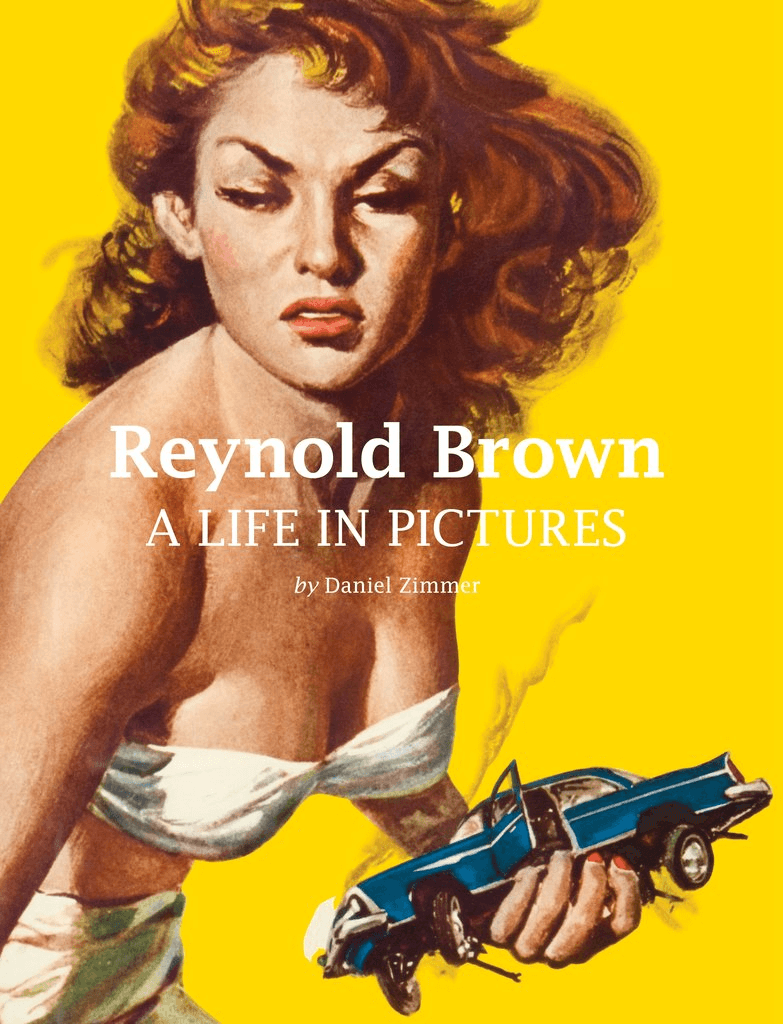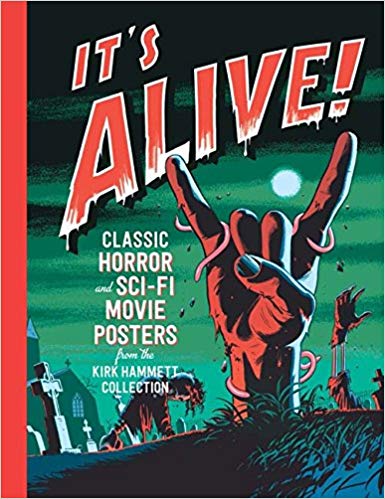Reynold Brown, Artist
Reynold Brown (October 18, 1917 – August 24, 1991) was a California representational artist renowned for painting many Hollywood film posters. He was also briefly active as a comics artist in his youth. He refined his native talents under Lester Bonar, art teacher at Alhambra High School. He introduced Brown to cartoonist Hal Forrest who hired him to ink (uncredited) the Tailspin Tommy strip around 1936-37. Norman Rockwell's sister was another teacher who recognized his talent and introduced them. Brown later did background work for Rockwell who advised him to leave cartooning if he wanted to be an illustrator. Brown subsequently won a scholarship to the Otis Art Institute.
During World War II Brown worked as a technical artist at North American Aviation where he devised the first “cut-away” illustrations of WWII fighter planes. There he met his wife, fellow artist Mary Louise Tejeda who encouraged him to go to New York to start a free-lance career following the war. In New York Brown illustrated numerous stories and advertisements for magazines such as Argosy, Popular Science, Saturday Evening Post, Boys' Life, Outdoor Life, and Popular Aviation as well as covers for the fledgling paperback book industry.
In 1950 they moved their growing family back to California where Brown taught at the Art Center College of Design. There he met Misha Kallis, influential art director at Universal Pictures. Through Kallis, Brown began his film poster work, which he produced for the next 20 years working for MGM, Universal Picture, Disney, Warner Bros., AIP, and others until quitting to pursue straight fine art painting in 1970.
Brown’s Western genre paintings became highly collectible in the early 70’s, from action dramas to intimate portraits. He unfortunately suffered a debilitating right-brain stroke in 1976 paralyzing his left, drawing, side. With his wife’s support, he re-trained himself to draw and paint with his right side. They moved to Western Nebraska where he concentrated on his beloved landscapes until he died in 1991.
In 1992, Nebraska documentary filmmaker, Mel Bucklin, released her feature-length film “The Man Who Drew Bug-eyed Monsters”. In 1997, the American Academy of Motion Pictures Arts and Sciences (Oscars.org) honored Brown with a one-man showing of the full breadth of his film work under the same title.
Brown was a master visual storyteller, intrigued by action, faces, and the stories that shaped them. A shy man, he sketched faces wherever he traveled, often giving them to subjects as though once he had drawn them they were permanently recorded and he had no further need of the record. He was an idealist and romantic who loved heroes and the heroic epic. He depicted action bursting out of standard rectangular confines coming at the audience cinematically, anticipating the modern CGI action films. He imbued even monsters with soul.
He walked away from Hollywood at a time when it began to celebrate only the anti-hero. A pragmatist, he had taken on illustration assignments to feed his family of 8. When he could no longer rationalize the subject matter he was asked to promote, he heroically walked away from his source of income. He found a new home in the Western genre where he was rewarded as a representational painter telling human stories in a time of abstract expressionism and artistic angst. He painted to the end of his life, finding beauty in the natural world and infusing it into his canvases.
Monograph
REYNOLD BROWN: A Life in Pictures" by Daniel Zimmer, new expanded edition 2017, 9x12", full color, hardcover published by the Illustrated Press. ISBN 13: 9780982004128
Books featuring Reynold Brown
THE ILLUSTRATOR IN AMERICA, 1860-2000 By Walt and Roger Reed. Revised edition. (New York, Madison Square Press and Illustration House) Barnes and Noble, 2001.
http://www.amazon.com/Illustrator-America-1860-2000-Society-Illustrators/dp/0823025233
THE GOOD POPE jacket cover (story of John XXIII) Harper Collins 2012
ISBN-13: 9780062089434
A MAGNIFICENT SHOWCASE: HISTORY, HERITAGE, AND ART - The United States Air Force and the Air Force Art Program by Timothy R. Keck (Author), Air Force History and Museums Program (U.S.) (Editor), Air Force Art Program (U.S.) (Editor), Lori Ann Dawson (Designer)
ISBN-13: 978-0160926617 ISBN-10: 0160926610
WHEN ART KEPT 'EM FLYING by Georges Grod – American WWII Aviation advertising art ISBN: 978-2-35250-133-6
REEL ART: GREAT POSTERS FROM THE GOLDEN AGE OF THE SILVER SCREEN By Stephen Rebello and Richard Allen. (New York, Artabras: 1988). This book covers posters prior to 1950 and thus before the time Brown worked in the industry. It never-the-less recognizes his work and identifies Brown as "one of Hollywood’s busiest and best poster artists of the 1950s".
MOVIE POSTER ARTISTS: United States and Canada (Volume 1) Paperback – November 17, 2016 by Ed Poole (Author), Susan Poole (Author) with 11 pages of movie poster thumbnail images created by Reynold Brown
THE ART OF THE B MOVIE POSTER Hardcover – August 1, 2016 by Adam Newell (Author) & Pete Tombs (Contributor)
IT'S ALIVE!: CLASSIC HORROR AND SCI-FI MOVIE POSTERS FROM THE KIRK HAMMETT COLLECTION - Aug 8, 2017 by Daniel Finamore and Steve Almond as displayed at the Peabody Essex Museum 2017. Book available through Amazon.
Magazines
CINEFANTASTIQUE Magazine Volume 18 #2/3 March 1988 (Selling Nightmares- Movie Poster Artists of the Fifties by Stephen Rebello)1988 by Frederick S. Clarke
ILLUSTRATION MAGAZINE, Issue #7 cover story “Inside the Mind of Reynold Brown” by Armando Mendez
The Journal of the Poster Society, Summer 1987. "Reynold Brown: Fifties and Sixties Movie Poster Artist Extraordinaire," by Stephen Rebello. Pg 5-8. Good article, fuzzy reproductions of seven movie works.
REVUE, August 1991. "The Fine Line: Drawings of Reynold Brown" by Franz Brown. Pg 14-15. Short article featuring six drawings by Brown.
THE WESTERN HORSEMAN, April 1990. "Reynold Brown and the Western Tradition," by Franz Brown. Page 30-32. Reproduced four works including Brown’s largest for "The Alamo," an 8x4 feet oil painting currently in the Alamo Museum.
SOUTHWEST ART MAGAZINE November 1989, "Illustrators Part I: The Movie Posters," p52, 54-58. This covered the movie poster art of Reynold Brown as well as Frank McCarthy, Robert Peak and Howard Terpening.
SOUTHWEST ART MAGAZINE, October 1988, "Legacy of a Master Instructor" p62-63. Reynold Brown teaching at Art Center College of Design (California).
NEBRASKAland, July 1988. "Remember Reynold Brown," by Don Cunningham. Pg 26-35. Included 12 images by Brown. This article gives a sense of the wide range of the work of Brown including material done before and after the movie poster material.
WESTERNER, July-August 1972. "Paint Brush and Saddle." Pg 36-37. Short discussion of Reynold Brown included three images, western paintings and drawing.
********************************************
Reynold Brown suffered a debilitating stroke in 1976. With the help of his wife, Mary Louise he recovered some of his artistic skills. These books use Reynold Brown and other artists to discuss the relationship of art to brain function.
THE NEUROBIOLOGY OF PAINTING: Volume 74 by F. Clifford Rose Discusses the impact of strokes on artists, including Brown
NEUROPSYCHOLOGY: THE NEURAL BASIS OF MENTAL FUNCTION. By Marie Banich Ph. D. (York, PA. Houghton Mifflin, 1997) Pg 437-9. A discussion of Reynold Brown’s stroke and its impact on his art. Four images including "Man of a Thousand Faces” and three post-stroke drawings.
********************************************
Visit the Monster Brains blog site by Aeron Alfrey

